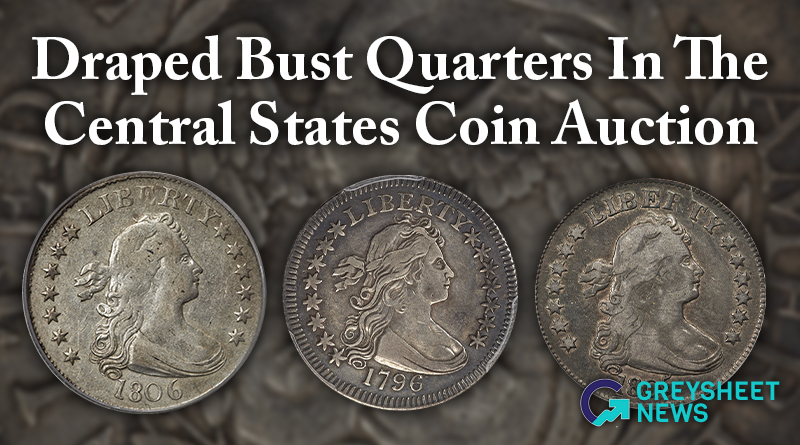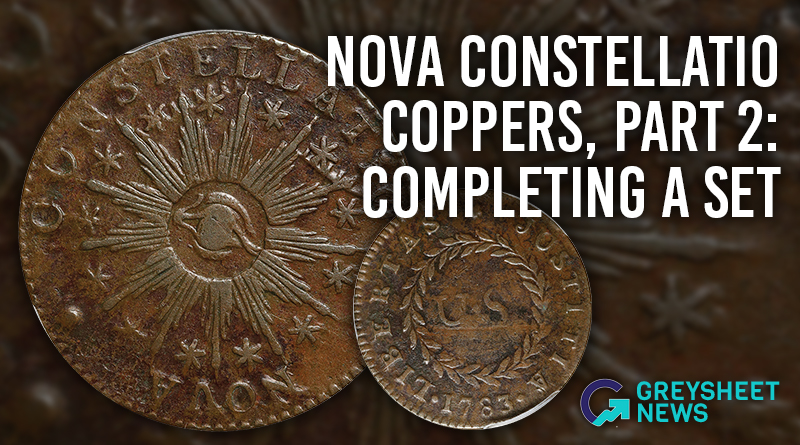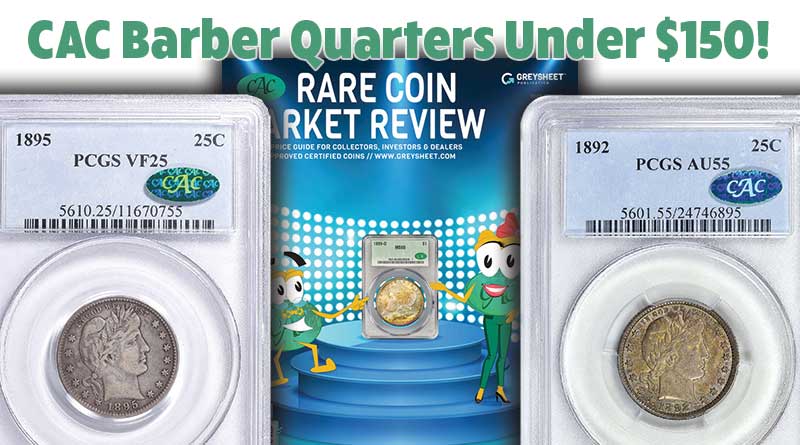CAC Coins For Less Than $150 Each, Part 7: 19th Century Barber Quarters
Amazingly, it is possible to find some great collector coins at an affordable price.
WHILE IT IS NOT practical to complete a set of CAC approved Barber quarters without spending more than $150 on each coin, a surprising number may be acquired for less than $150 each. By purchasing a half-dozen or even a dozen nineteenth century Barber quarters for less than $150 each, a collector on a budget could certainly make progress towards completing a CAC-only set and later decide how much he or she wishes to budget for a set.
This is part of a series on CAC approved coins that cost less than $150 each. Classic U.S. copper coins were the theme of the first part. The second focused on Buffalo nickels. The third concerned Barber dimes. The fourth was about Washington quarters. The topic of the fifth was Franklin halves. The sixth addressed Mercury dimes. Here in the seventh part, nineteenth century Barber quarters are discussed.
Barber quarters were minted from 1892 to 1916. In theory, CAC certified representatives of forty-five or so of the fifty twentieth century dates may be purchased for less than $150 each, though it may not be possible to find all of them in the near future. It makes sense to start with nineteenth century dates.
Now that the new CAC grading center in Virginia is operational, it is likely that the number of CAC certified inexpensive coins will vastly increase. Before 2023, for a coin to be CAC certified, it had to be first sent to PCGS or NGC and then sent to the CAC office in New Jersey for approval. Such a two-stage process involved two grading fees for each coin and multiple shipments.
Dealers and collectors who have raw (not certified or encapsulated) Barber quarters may now send them to the CAC office in Virginia for modest fees, often within shipments that include other kinds of coins. There is a good reason to figure that many more CAC certified, relatively inexpensive coins will be available in the future.
Also, fairly certified nineteenth century coins are logically marketable to both coin collectors and members of the general public. Most U.S. citizens learned about U.S. history in school.
As a kid, I collected circulated Barber coins. When I was five years old, my grandmother gave me Barber dimes, quarters and halves, which she had obtained much earlier in her life. By the time I was seven, I was purchasing Barber dimes and quarters at coin shows.
I then found coins with nineteenth century dates to be more exciting than those with twentieth century dates. I thought about the advent of the telegraph, long distance train rides, the invention of the telephone, advances in printing technology, and early automobiles. In my mind, a coin from the 1900s generated images of travel through frontier regions, stagecoaches, steamboats, entrepreneurship, tremendous economic and technological growth, plus fabulous parties with beautiful women. During the ‘Gilded Age,’ major cities on the East Coast became glamorous like they had never been before.
My romanticized view of the nineteenth century was remarkably consistent with historical realities, though not entirely so. Most serious historians agree that the late nineteenth century was a dynamic, amazing, and exciting era in the United States, a young nation that developed into one of the wealthiest and most scientifically advanced nations in the world. “The rapid expansion of industrialization led to real wage growth of 60% between 1860 and 1890,” it is noted in Wikipedia.
In nominal dollars, U.S. GDP increased from $7.81 billion in 1870 to $20.76 billion in 1900. In “2012 dollars,” historical sums later converted to reflect the value of the U.S. dollar in the year 2012, Real GDP increased from $127 billion in 1870 to $480 billion in 1900! Yes, the U.S. population increased, too. Even so, real GDP per person almost doubled from 1870 to 1900. Though there were occasional economic downturns, growth of more than 5% during any one year was not unusual. From 1897 to 1898, for example, GDP increased by nearly 11%. (See measuringworth.com for an easy way to access such data, which will never be perfect.)
The coins of the late nineteenth century are authentic reminders of this important era in history. Barber quarters were introduced in 1892. There are quite a few nineteenth century dates, most of which are available for modest prices. Moreover, Barber quarters are not rare. Except for the 1896-S and the 1901-S, thousands of each date survive. For various reasons, though, a substantial percentage of surviving Barber quarters will never qualify for a numerical grade in the views of CAC experts.
A large number of Barber quarters were damaged in circulation or were harmfully cleaned by careless caretakers. Later, many classic U.S. coins were artificially toned or otherwise modified by unscrupulous dealers.
Not long ago, a somewhat uniform, thick gray material was often applied to Barber coins to deflect attention from contact marks and scratches. This artificial gray stuff is very similar in color to some tones that naturally developed while Barber coins were normally stored. It is unsurprising that CAC approved Barber coins often command noteworthy premiums.
It is best for each buyer to start by spending amounts that the respective collector regards as small sums. Although an amount that one collector regards as small may be a lot of money to another collector, it is apparent that $150 is a relatively small sum for a certified nineteenth century coin.
Back on August 6, 2017, GreatCollections sold a PCGS graded AU55 1892 quarter, with a sticker of approval from CAC, for $135.30. On June 12, 2022, GreatCollections sold a CAC approved, PCGS graded VF25 1892 quarter for $89.74. On August 25, 2020, Heritage sold a CAC approved AU53 grade 1892 quarter for $132.
On June 12, 2022, Great Collections sold a CAC approved Fine-15 grade 1892-O for $131.34 and a CAC approved VF25 1893 quarter for $147.09. On August 2, 2020, during one of the darker phases of the pandemic, GreatCollections sold a CAC approved, NGC graded VF35 1893 for $99.
In theory, any 1893-O quarter grading from AG3 to XF40 should retail for less than $150. So far, there are only three CAC certified 1893-O quarters in this range, one grading VF20 and two as XF40.
The 1894-O is not one of the scarcest New Orleans Mint quarters. On April 24, 2018, Heritage sold a CAC approved XF45 grade 1894-O quarter for $144.
The 1894-S likewise is not one of the scarcest San Francisco Mint Barber quarters. A CAC certified 1894-S that grades less than VF35 is CPG ® estimated to retail for less than $150. A Fine grade 1894-S, if one was CAC approved, would probably sell for less than $50.
On October 16, 2022, GreatCollections sold a CAC approved VF25 grade 1895 quarter for $84.38. On June 12, 2022, GreatCollections sold a CAC approved VF30 grade 1896 for $148.53.
The CAC population of 1896-O quarters, fifty, is greater than the CAC population of 1896 quarters, forty-four, even though the 1896-O is much scarcer. This is because profit-maximizing dealers are far more likely to submit 1896-O quarters to CAC than 1896 quarters. The cost of a submission, including shipping fees, is an important consideration for full-time coin dealers.
The 1896-O is often overshadowed by the 1896-S, which is one of the keys to the series. The 1896-O, though, is a semi-key. A CAC certified VG8 or lower grade 1896-O quarter would probably sell for less than $150, if offered in 2023 or 2024.
The 1897-S is also a semi-key. An About Good to Good grade 1897-S might sell for less than $150.
The 1898 is very common. In grades above Very Fine, the 1898-O is much scarcer than the 1898 and is mildly scarcer than the 1898-S. The 1898-O and the 1898-S are both better dates.
CAC has approved four 1898-O quarters as VF25, four as VF30, and two as VF35. The CPG ® medium retail estimates for these are $218, $257 and $296, respectively, which are good deals from a logical perspective. Although there are none yet, a CAC approved Fine grade 1898-O would probably retail for less than $150.
As only one 1898-S quarter is CAC certified in grades below XF40, and just one is certified as XF40, it would be fun to buy several raw Good to VF grade 1898-S quarters for $20 to $100 each and send them to CAC. Even if a few fail to receive numerical grades from CAC, the whole endeavor may be worthwhile and educational. While a CAC approved AU58 grade 1898-S might very well be obtainable in the present or near future for more than $1,000, it might be more interesting and satisfying to buy a half dozen raw Fine to VF grade 1898-S quarters for less than $400 in total, examine them carefully, pay grading fees, and then look forward to their return from CAC Grading in Virginia.
The 1899 is one of the most common dates in the series. For a type set, it is preferable to a twentieth century date, in my view. It draws more attention than common 20th century dates, like a 1907 or a 1910, and it is a relic from an earlier era.
The practicality of collecting CAC certified Barber quarters for less than $150 each depends in large part on the number of pertinent Barber quarters that are certified at the CAC Virginia office in the future. If many AG to VF Barber quarters of most all dates are submitted, then there is a good chance that a large part of a CAC-only set may be completed without spending more than $150 on any one Barber quarter. Even if a collector decides not to seek to complete a whole set, buying several CAC certified Barber quarters for less than $150 each may be very enjoyable. A set of four is an idea, featuring representatives of each of the four mints that struck Barber quarters: Philadelphia, New Orleans, San Francisco and Denver.
Copyright ©2023 Greg Reynolds • Insightful10@gmail.com

Download the Greysheet app for access to pricing, news, events and your subscriptions.
Subscribe Now.

Subscribe to CAC Rare Coin Market Review for the industry's most respected pricing and to read more articles just like this.
Source: Greg Reynolds
Related Stories (powered by Greysheet News)
View all news
The Lusk set of Draped Bust quarters brought strong results.

The 1889-CC is the second scarcest business strike in the series.

Just six coins are required for a set of true Nova Constellatio Coppers, and the coins selected need not be very expensive.









Please sign in or register to leave a comment.
Your identity will be restricted to first name/last initial, or a user ID you create.
Comment
Comments